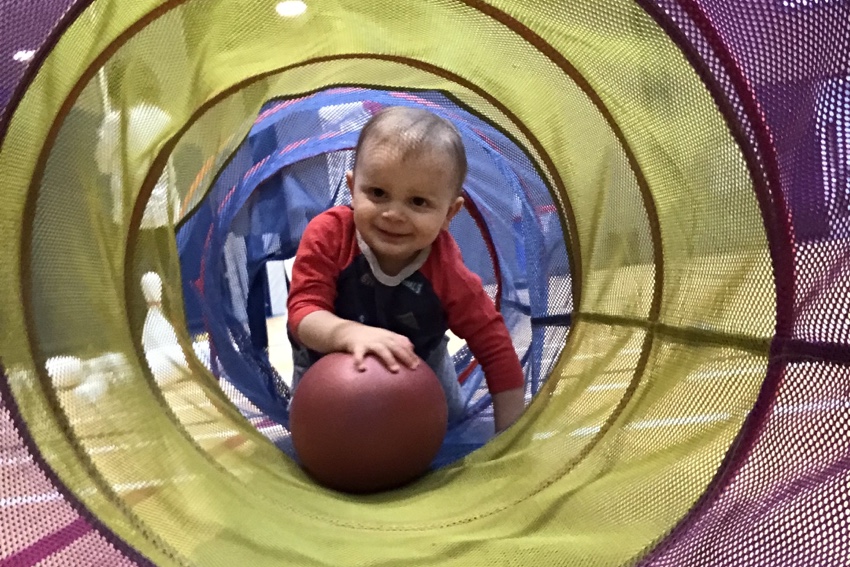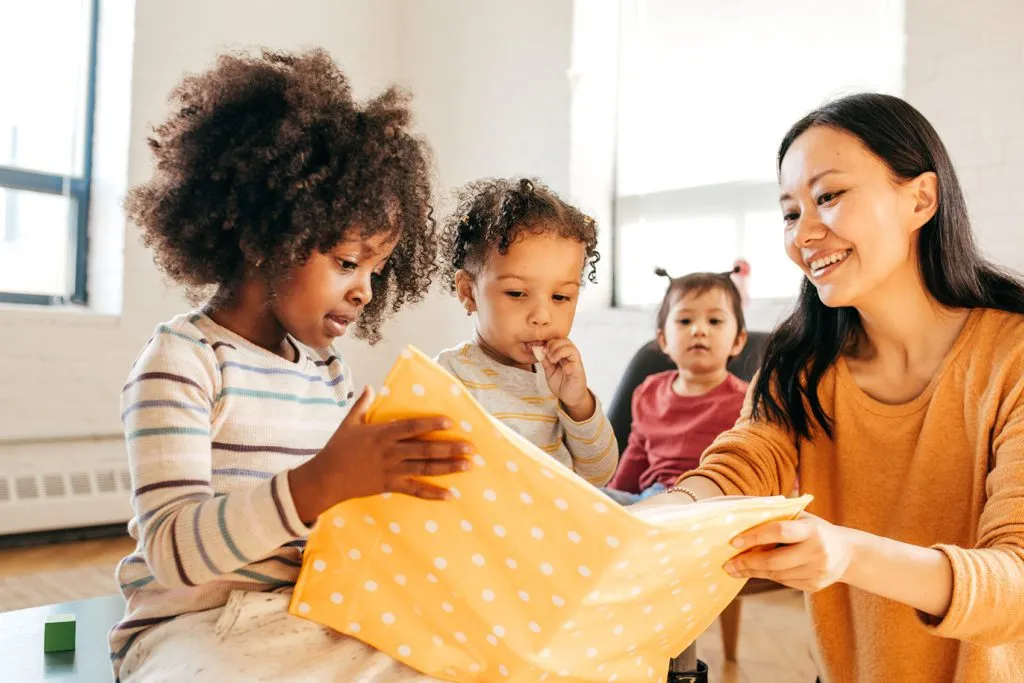Let’s Move! Challenging Children From Crawl to Climb


There are a couple of large granite climbing blocks in the Portland, Oregon airport near the baggage claim. Even after a long, tiring flight, I love to watch children climb, make new friends, negotiate for position, and ask for just a few more minutes of climbing fun before leaving the airport. I’m fascinated by how children of all ages and cultures explore, react, communicate, and wonder about the granite blocks. But mostly, I love to watch young children move. Human beings are built to move, and as soon as children are able to move themselves from one position to another, their world opens up. Suddenly, they can independently find their own fun rather than waiting for fun to find them.
Though humans are pre-wired to move and explore, it’s important to note that motor development is not automatic. Physical development includes large (gross-motor) and small muscles (fine-motor) and generally progresses predictably, from simple to complex and in a head-to-toe direction. These days, many babies spend a great deal of time in “containers,” such as car seats, high chairs, and bouncy chairs, that limit their ability to move freely to explore and develop their muscles. Infants desperately need opportunities and space to move their bodies! Though we as adults understand the importance of physical development, as children get older (particularly girls), they are often encouraged to limit their movements and “stay still” instead of using their bodies in challenging ways. If children are to develop physical competence, they need to be able to practice and apply their movement skills.
To support physical development, offer children a variety of planned movement experiences in addition to encouraging spontaneous and creative movement experiences.
Make time to lead children in activities that support gross-motor development, like pulling themselves up, rolling, crawling, walking, running, climbing, balancing, jumping, hopping, kicking, stretching, and playing ball games. You can also encourage children to move freely and explore movements on their own. Provide materials such as rhythmic musical selections, percussive instruments, scarves, or obstacle course props to prompt spontaneous, independent physical experiences.
Here are some materials that can help you support children’s gross-motor skills:
- Riding toys such as scooters
- Push-and-pull toys
- Climber and slide wagons
- Tractor tires (even young toddlers enjoy climbing on and lifting tires!)
- Large boxes
- Tools for digging and shoveling in sand or in a garden
- Hoops
- Tumbling mats
- Tunnels
- Cars and trucks
- Balls of various sizes and textures (for tossing, kicking, and bouncing)
- Climbing structures (e.g., low steps covered with carpet for infants, toddlers and twos; steps and climbers for preschoolers)
- A variety of furniture (e.g., foam furniture covered with vinyl for infants, toddlers, and twos)
- Music and scarves or streamers
- Percussive instruments that require large-muscle movements (e.g., cymbals, rhythm sticks, clappers, etc.)
- Obstacle course props (e.g., cones, tape, hoops, tunnels, crates, etc.)
Though the materials listed above are fantastic for challenging children’s skills, often the richest experiences come from the simplest tasks.
Children benefit from doing “heavy work” that engages their large muscles and joints. This is especially important to increasing proprioception (one’s ability to sense the body’s position, posture, balance, and motion). Challenge children to do “heavy work,” which can include jumping; weight-bearing movements like crab or bear walks; tug-of-war; or even pulling, pushing, or lifting heavy objects like bottles of water or bins of toys.
As the weather gets warmer and nicer, take advantage of children’s natural excitement about moving and exploring by planning an outdoor field day with several classes. Set up games and activities that require skills that are important to young children’s physical development, such as hopscotch, dancing, soccer, a free-throw competition, a sandcastle-building center, or a necklace-making center. This is a great way to observe children’s end-of-year physical skills and behaviors and also a fun way to celebrate the changing season and close of the school year.
Lastly, be sure to always model excitement and appreciation for all movement activities. Remember, your enthusiasm is contagious—the more you participate, the more the children will delight in the experience!
Have fun and get moving!

School Readiness Begins in Infancy
A high-quality infant program combines all the essential elements of learning and family partnerships.